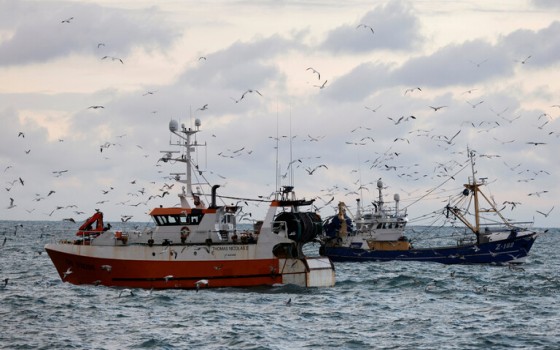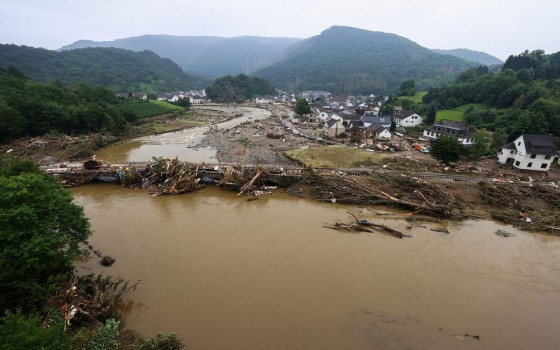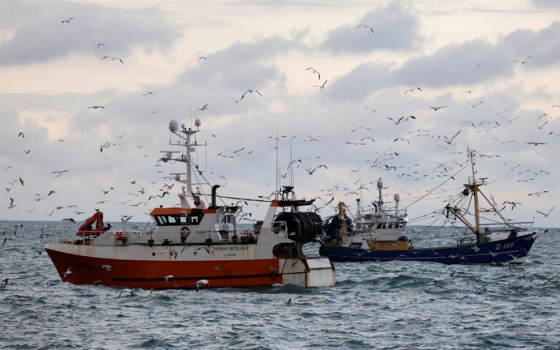
Strengthening air quality standards in the European Union to achieve the goal of eliminating pollution

- Europe and Arabs
- Wednesday , 21 February 2024 11:43 AM GMT
Brussels: Europe and the Arabs
It was announced in Brussels that an agreement had been reached between representatives of both the Council of the Union and the European Parliament on a proposal to set air quality standards in the European Union that must be achieved with the aim of achieving the goal of eliminating pollution, and thus contributing to an environment free of toxic substances in the European Union by 2050. It also seeks to bring EU air quality standards in line with World Health Organization recommendations. According to a statement issued last night, “The agreement still needs to be confirmed by the two institutions before going through formal adoption procedures. For the European Union, it is The health of its citizens is a priority. This is what we have demonstrated today with this decisive agreement that will contribute to achieving the EU's ambition of eliminating pollution by 2050. The new rules will significantly improve the air quality we breathe and help us to effectively tackle air pollution, thus reducing premature deaths and associated risks. "With health."
Main elements of the agreement
With the new rules, participating legislators agreed to set improved EU air quality standards for 2030 in the form of threshold and target values that are closer to WHO guidelines and which will be reviewed regularly. The revised guidance covers a range of air pollutants, including particulate matter and particulate matter (PM2.5 and PM10), nitrogen dioxide (NO2), sulfur dioxide (SO2), benzo(a)pyrene, arsenic, lead and nickel. And others, and sets specific standards for each of them. For example, annual limit values for pollutants with the highest documented impact on human health, PM2.5 and NO2, will be reduced from 25 µg/m3 to 10 µg/m3 and from 40 µg/m3 to 20 µg/m3, respectively. .
The Interim Agreement gives Member States the possibility to request, by 31 January 2029, for specific reasons and under strict conditions, a postponement of the deadline for reaching air quality limit values:
Until no later than 1 January 2040 for areas where compliance with the Directive by the deadline may not be achievable due to specific climate and mountain conditions or where the necessary reductions can only be achieved through a significant impact on existing domestic heating systems.
Until no later than January 1, 2035 (with the possibility of an extension for another two years) if projections show that the threshold values cannot be achieved by the deadline.
To require these deferrals, Member States will have to include air quality forecasts in their air quality roadmaps (to be drawn up by 2028) to make clear that the override will be kept as short as possible and that the threshold value will be met by the end of the year. Postponement period at the latest. During the postponement period, Member States will also have to regularly update their roadmaps and report on their implementation.
Air quality roadmaps, plans and short-term action plans
In cases where the limit or target value is exceeded or there is a significant risk of exceeding alert or information limits for certain pollutants, the text requires Member States to specify the following:
Air quality roadmap ahead of deadline if pollutant levels between 2026 and 2029 exceed the maximum or target value that must be achieved by 2030
Air quality plans for areas where pollutant levels exceed the limit and target values set forth in the directive after the deadline
Short-term action plans specifying emergency measures (e.g. restriction of vehicle movement, suspension of construction work, etc.) to reduce immediate risks to human health in areas where warning thresholds will be exceeded
Participating legislators agreed to include softer requirements for determining air quality and short-term action plans in cases where the possibility of reducing certain concentrations of pollutants is very limited due to local geographic and meteorological conditions. When it comes to ozone, in cases where there is no significant potential to reduce ozone concentrations at the local or regional level, the participating legislators agreed to exempt Member States from developing air quality plans, provided that they provide the Commission and the public with a detailed explanation of this exemption.
The provisionally agreed text calls for the European Commission to review air quality standards by 2030 and every five years thereafter, in order to evaluate options for alignment with the latest WHO guidelines and the latest scientific evidence. In its review, the Committee should also evaluate other provisions of the Directive, including those relating to postponement of fulfillment deadlines and transboundary pollution.
Based on its review, the Commission must then submit proposals to review the preconditions.












No Comments Found